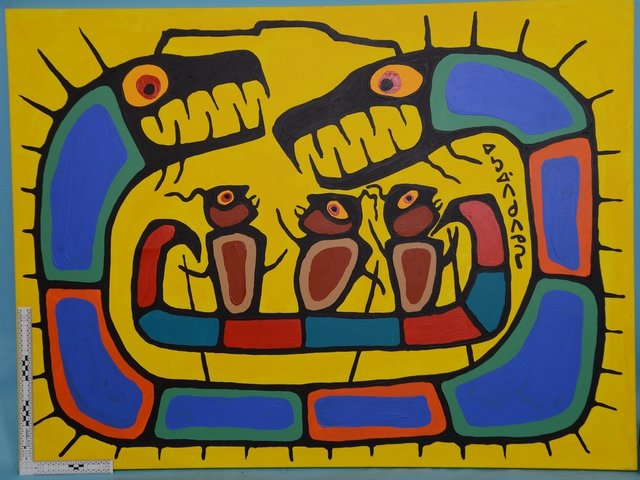Forgery has a fascination that is snake-like, a Schadenfreude of seeing the art world out-smarted. The Art of Forgery by Noah Charney is a compendium of cases; paintings, prints, sculpture, goldwork, wine, literature and science are included. It is a rattling good read for those that know little of forgeries damage to our interpretation of culture. It is not, however, comprehensive. Where is Stefano Bardini’s wholesale “restorations” of Italian primitives? Reinhold Vasters’ exquisite goldsmith’s work is included but not the Castellani’s, who would sell their own jewellery as archaeological finds? What of Guy Hain’s thousands of forged bronzes, many still to be identified, a claim oft said by forgers?
To show physiological insight Noah Charney arranges cases into chapters that sound appropriately like the seven (or eight) deadly sins; Genius, Pride, Revenge, Fame, Crime, Opportunism, Money and Power. Some forgers certainly could qualify for appearances in several categories. Wolfgang Beltracchi comes under crime, which the author defines as group but not organised crime. He did work with his wife, his sister-in-law, and a colleague, but why not have him in Money, or Pride? He showed no remorse for what he has done.
With the Warhol Red Self-Portrait, I understand there are two series, one the Warhol Authentication Board thought he authorised and one they believed he did not. So did they think they were looking at forgeries or unauthorised copies? I understand Joe Simon Whelan produced evidence Warhol did know and oversaw both editions though this did not sway the board.
The author draws most of his material from press articles (so it must be true), the internet, some specialist journals, autobiographies of convicted forgers and the author’s own previous publications. But readers wishing to learn what to look out for, to inform themselves so as not to get caught out, you will find no clues here. The material is peppered with inaccuracy. Looking for underdrawings with a black light, instead of Infra-Red at the other end of the visible spectrum, will destine you to disappointment.
What of the “tells” that first raise doubts that something is not what you think it is? Rare as it is, like the Getty’s Nicholas Turner, one sees several forgeries together allegedly by different artists but revealing a similar style. Might a work look too familiar? Is it a pastiche of several of an artist’s known works not a straight copy? Has it aged in the way one expects of its supposed age? There are no black and white ways to definitively alert the wary. Finding Titanium white, available only from the 1920s, in the ground of a Raphael helps. But one might argue the sample came from a restoration done after the 1920s. Often one is weighing shades of grey drawn from long years of study and looking, and looking is a skill that can be honed over years.
Then there is the forging of provenances. Charney speaks of John Drewe inserting forged documents into bona fide archives, undermining much more than the works they were supposed to support. Looking helps here too. Is the paper right? Yes, paper can be analysed. Does the document fit with what we know of the artist or politician?
Much is to do with context and is the province of the “technical art historian”, who studies the materials and application methods of art works. Charney suggests the art market should test more works, at least those worth into six figures. But this, I gather, is already happening in the Russian avant-garde market, one overwhelmed with forgeries. Buyers agree on a sale but only to pay for it once it has been rigorously scientifically tested.
Clare Finn is an accredited paintings conservator. At the Royal College of Art, she wrote her PhD thesis on Picasso's decorative metalwork. She has often written for Apollo Magazine, the Sculpture Journal and ICON News. She is also the secretary of the Visual Arts and Architecture Section of the Critics’ Circle.
The Art of Forgery: the Minds, Motives and Methods of Master Forgers
Noah Charney
Phaidon Press, 296pp, £19.95 (hb)


